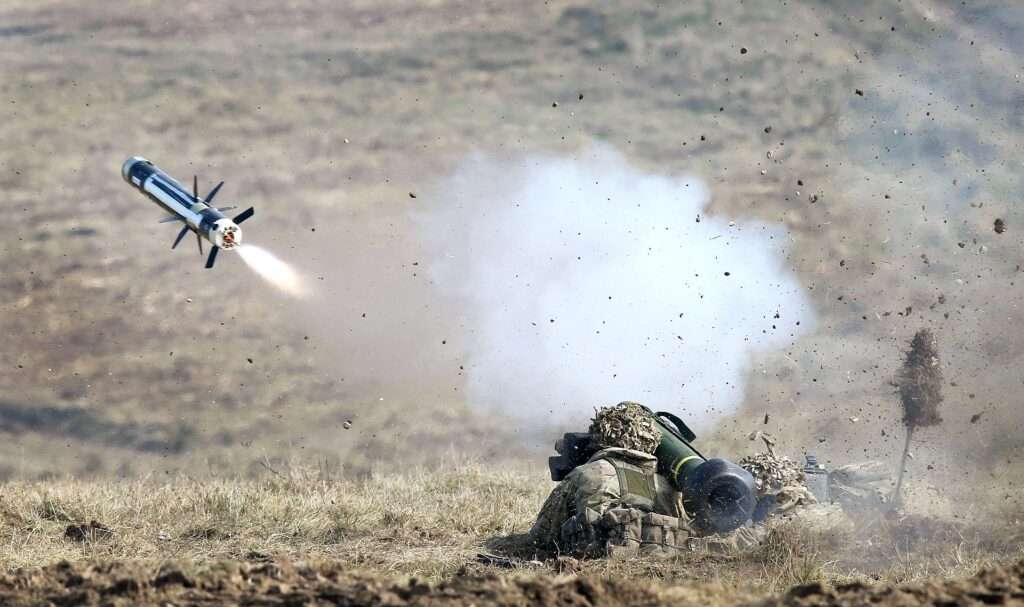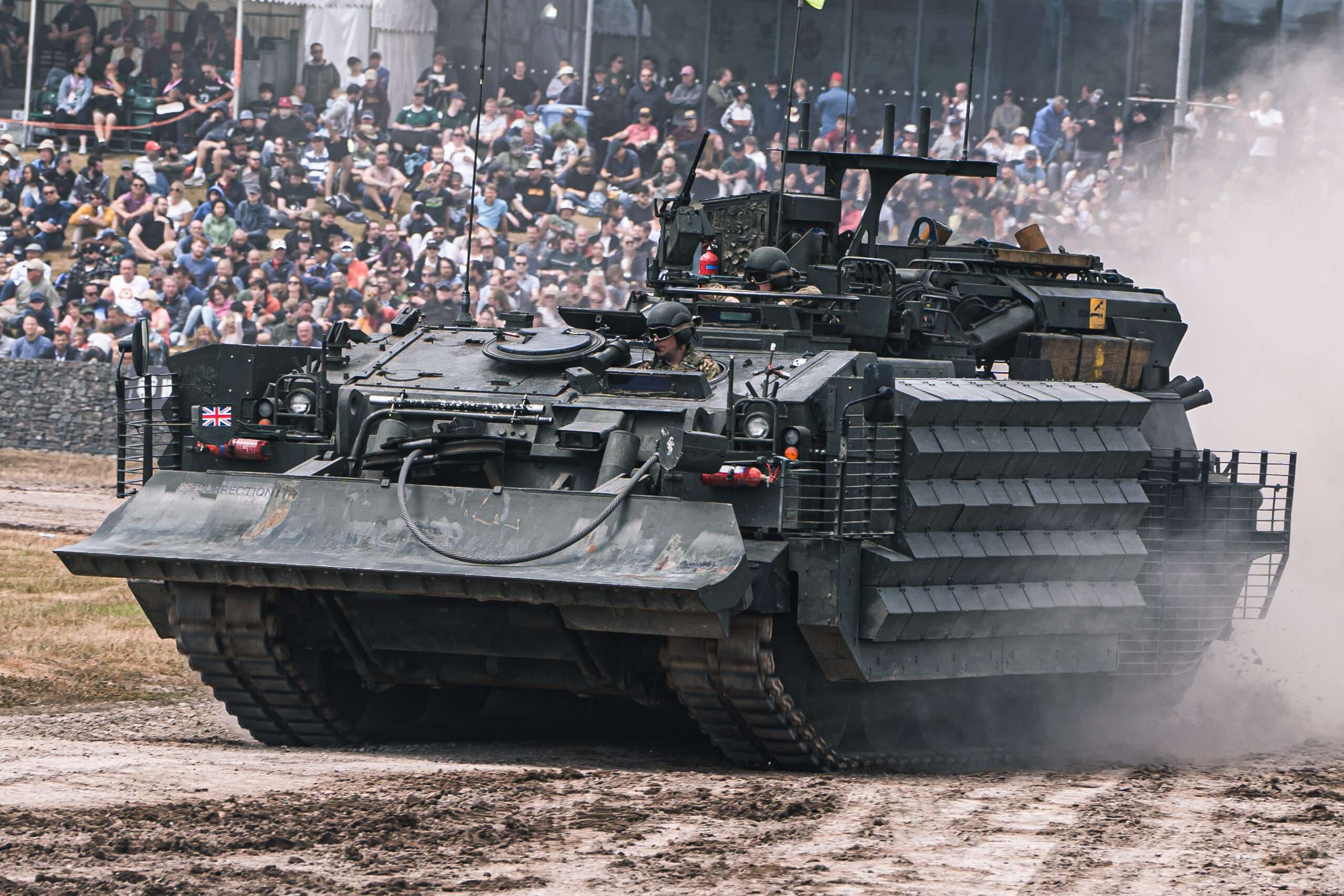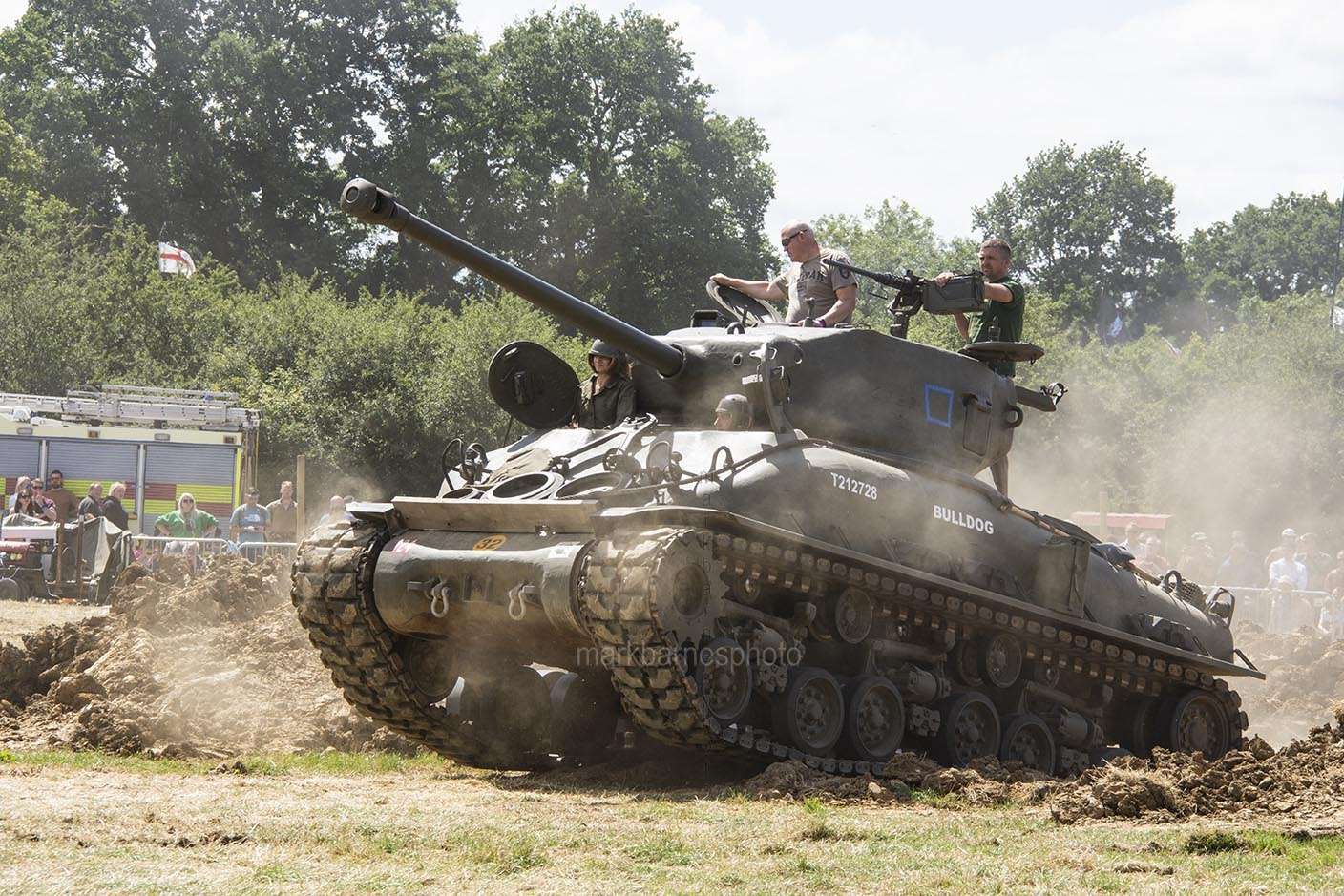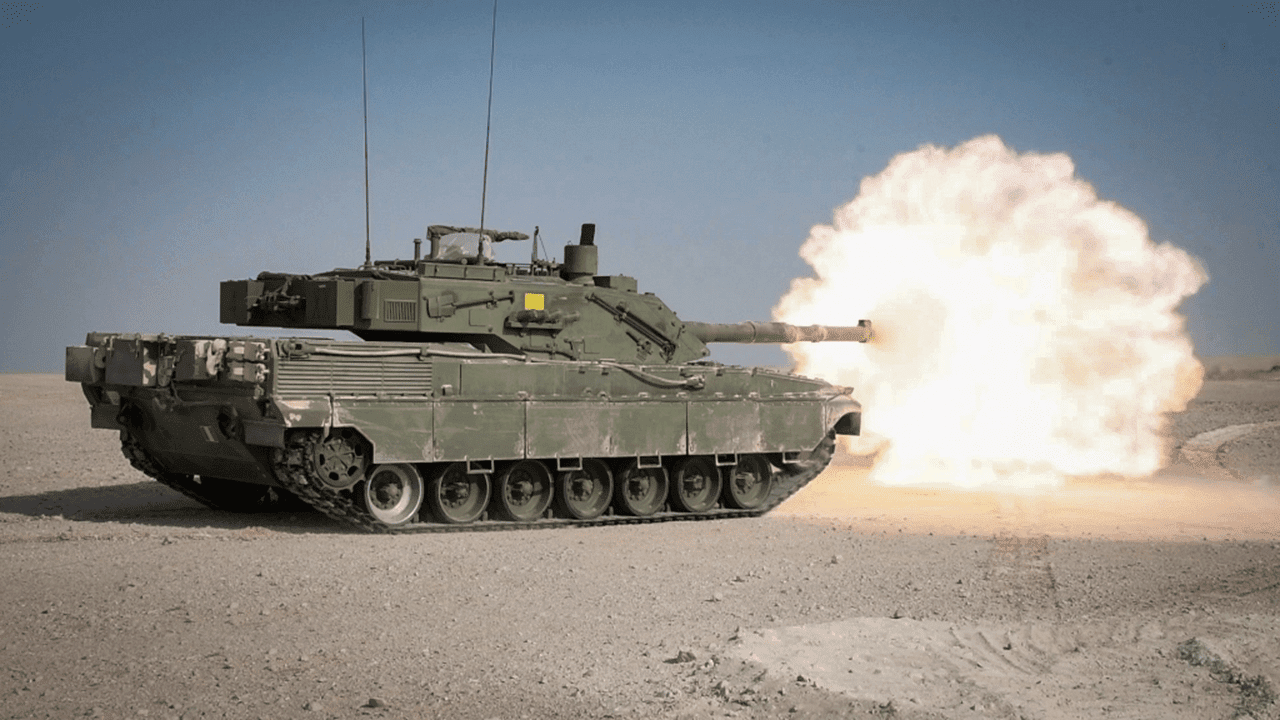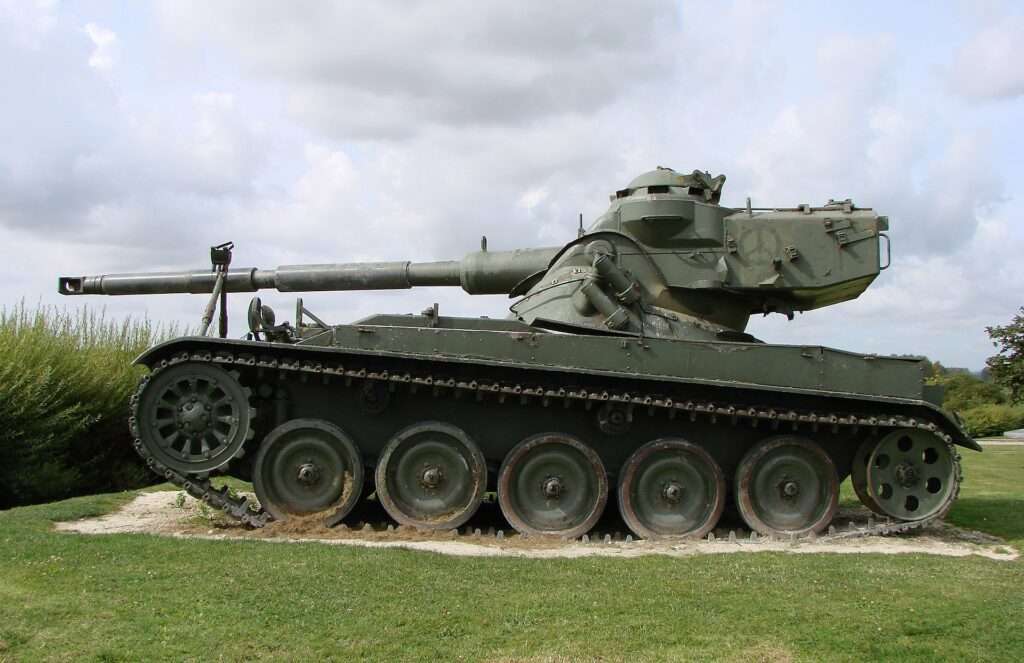When you want to bust a bunker or knock out even the toughest main battle tank, look no further than the FGM-148 Javelin missile. This US made weapon has been in service since the 1990s, and has been hard at work knocking out tanks ever since.
This portable fire-and-forget system has placed tank and aircraft-destroying firepower in the hands of infantry soldiers. The Javelin has repeatedly shown its capability of doing exactly this, having turned hundreds of tanks into smouldering wrecks all over the world.
It is precise, extremely powerful and highly flexible.
The Javelin is considered the best portable anti-tank system in the world right now.
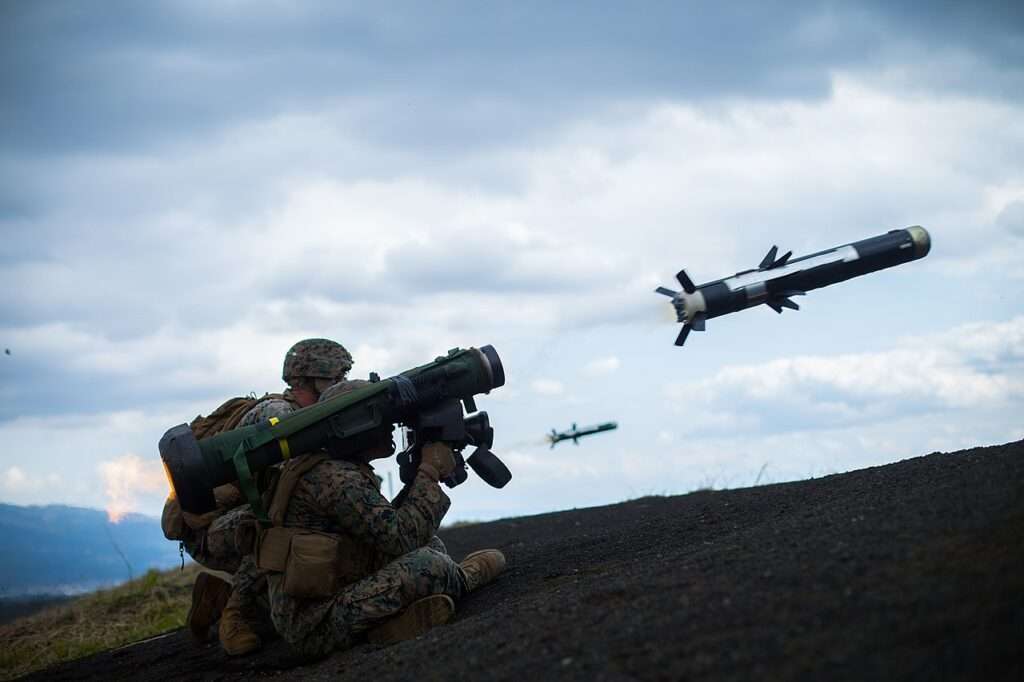
Contents
Development
Before the Javelin was the M47 Dragon, a shoulder-fired, man-portable guided missile.
Although primarily an anti-tank weapon to counter Soviet tanks like the T-55 and T-62, the Dragon could be used against fortified positions.
It used a similar guidance system to the TOW and Shillelagh missiles, and in its first variant was able to penetrate well over 300 mm of steel.
However the system had some weaknesses, mostly related to its guidance system.
The missile is wire-guided, which means the missile and the guidance system are physically linked during the missile’s entire flight.
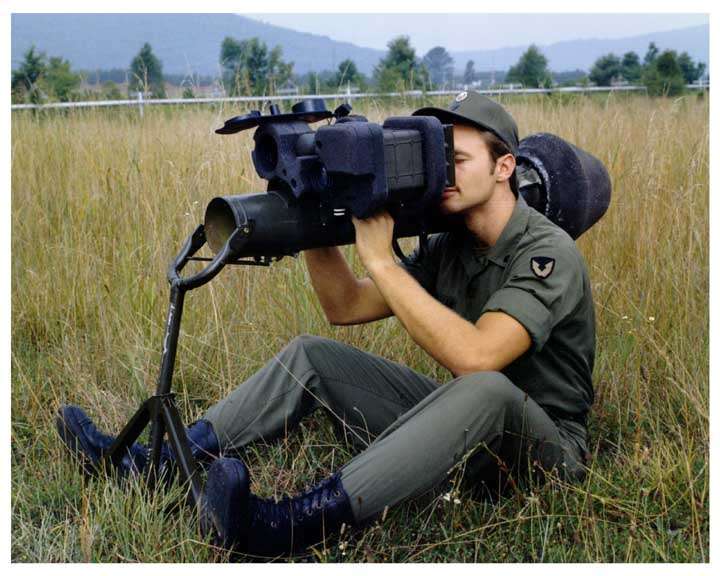
To guide the missile, the user had to aim the weapon’s sight at the target and hold it there until impact. Infrared sensors tracked the missiles position and made automatic corrections based on the user’s aim.
This method of guidance was common at the time, but its range was limited (1,000 – 1,500 m) due to the wired connection. Additionally, as the user had to keep the sights on the target the entire time, they were left exposed and vulnerable until impact.
In the early 1980s the US began investigating the possibility of acquiring a more capable anti-tank weapon for its infantry. They introduced the Advanced Anti-Tank Weapon System—Medium (AAWS-M) requirement in 1983, which soon led to a number of proposals from defence contractors.
In 1989 the US awarded the contract to the joint venture of Texas Instruments (now Raytheon) and Martin Marietta (now Lockheed Martin). Around this time this new system was designated FGM-148. This is what would later become the Javelin.
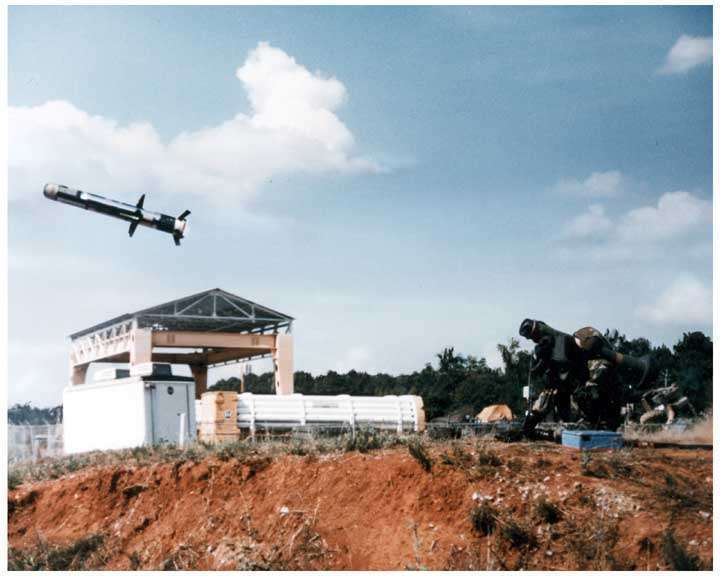
The Javelin
The weapon’s first flight was performed successfully in 1991, as did the first test-firing from the launcher in 1993.
Clearly a capable system, the Javelin was in production by 1994 and in the hands of US units by 1996.
It completely replaced the M47 Dragon, which was phased out in 2001. Since then, it has been used by over 20 countries around the globe.
The Javelin is massively more capable than its predecessors. Arguably its greatest improvement is its fire-and-forget ability, allowing the user to immediately take cover or relocate once the missile is launched.
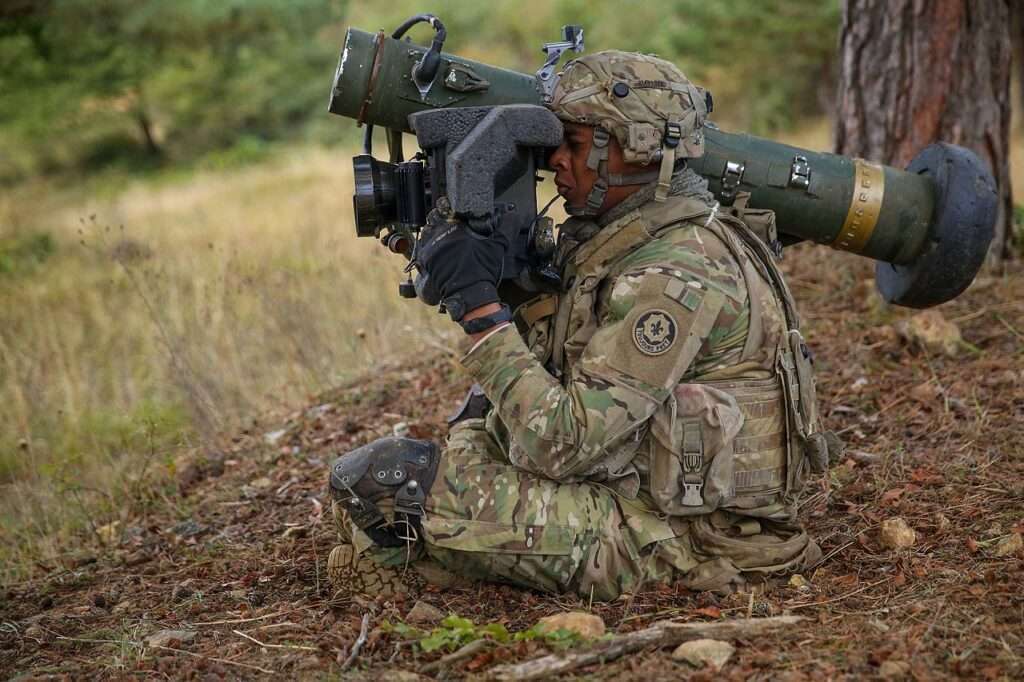
This is made possible by a tracking and guidance system onboard the missile itself.
The Javelin is also extremely deadly against targets as it flies a top-attack flight profile, meaning the missile climbs above the target before descending down on top of it. With this trajectory, the Javelin can strike the top sections of armored vehicles, which are usually the least protected areas.
If needed, the Javelin can still fire in a direct-attack mode.
Command Launch Unit
The system is made up of three main parts that work together: the launch tube, the missile and the Command Launch Unit (CLU).
The CLU is the brains of the operation and the most expensive component of the Javelin system. This piece of equipment attaches to the launch tube, and is used by the operator to scan the battlefield and select a heat source to lock the missile onto.

It contains three lenses that each provide a different view. The first is the day lens, which is simply a 4x magnification sight used to scan the battlefield in daylight.
Next is the wide field of view (WFOV) lens, which is a thermal sight at 4x magnification. It is particularly useful at night or to spot hidden targets.
Last is the narrow field of view (NFOV) lens, the physically largest of the three lenses. This is a 12x magnification thermal sight that is used to get a detailed view of a potential target.
The user can switch between these sights at will with the press of a button.
The use of the CLU doesn’t end with the missile though, as it can be detached from the launch tube and used independently as a thermal imaging sight. This gives infantry access to thermal vision without relying on nearby vehicles equipped with such sights.
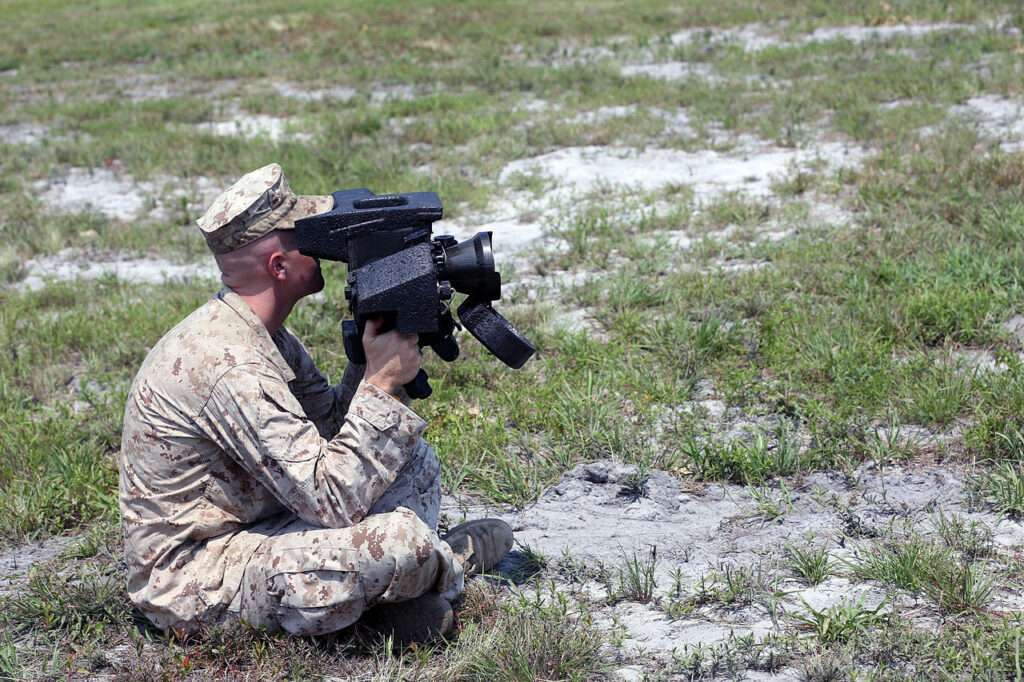
For thermal imaging sights to work properly they must be cooled down. For this reason, the CLU is fitted with a refrigeration unit that keeps the sights at working temperature.
Javelin Missile
The missile itself is also a technological marvel. It contains its own onboard infrared imaging system (also cooled, this time by a canister of argon gas) and tracker that continuously monitor the locked-on target.
The seeker provides an image of the target, then the tracker uses a process similar to pattern recognition algorithms to determine where exactly the target is in this image. The tracker informs the guidance system of any adjustments that need to be made.
The seeker is mounted on a complex gimbal system that allows it to keep the target in its sight despite extreme g-forces and speeds.

As a top attack weapon, the missile climbs to a maximum of 160 meters before striking the top surfaces of targets.
In the warhead is a tandem charge, containing two shaped charges. Tandem warheads are devastating as the first charge eliminates first-layer defenses, like explosive reactive armor (ERA), paving the way for the main charge to get to work against the actual armor.
As it is not wire guided like earlier weapons and has its own on board guidance system, the Javelin can hit targets up to 2,500 meters away. This also enables the operators to relocate, take cover or even fire a second missile before impact.
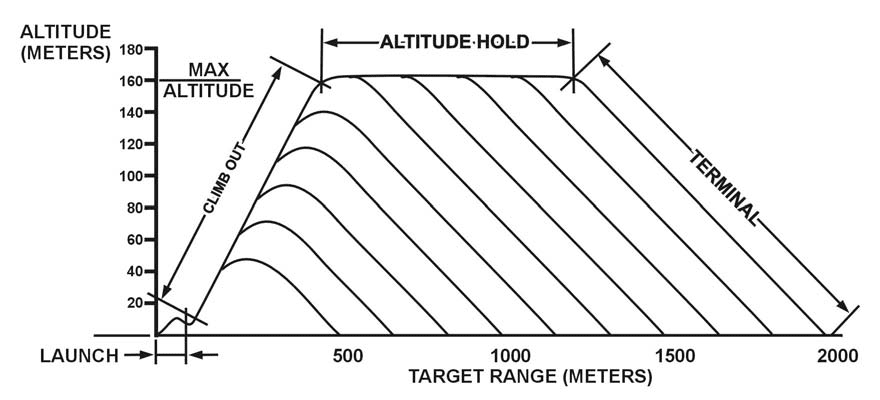
Its direct-attack capabilities allow it to be used in confined spaces (where there isn’t room for the missile to climb upwards) or even against helicopters.
When it strikes, the Javelin is capable of penetrating an incredible 750 mm of armor. There is no tank on the planet capable of withstanding a hit from a Javelin.
Launching a Javelin Missile
The Javelin is famous for its “soft launch”. When fired, the missile is launched out of the tube without its rocket motor engaged. Only when it has reached a safe distance from the operator does the motor ignite.
This makes the weapon safer to use and reduces the amount of back blast.
To use the Javelin, the operator looks through the CLU’s multiple sights, first hunting for a potential target with the lower-magnification sights.
Once an object of interest has been found, the operator switches to the 12x thermal sight and confirms this is indeed a target.
They will then switch to the missile’s 9x thermal view and set a lock on the target. When fired, the missile is ejected out of the tube. After a small delay the rocket motor ignites, powering the missile up to a maximum of 160 meters.
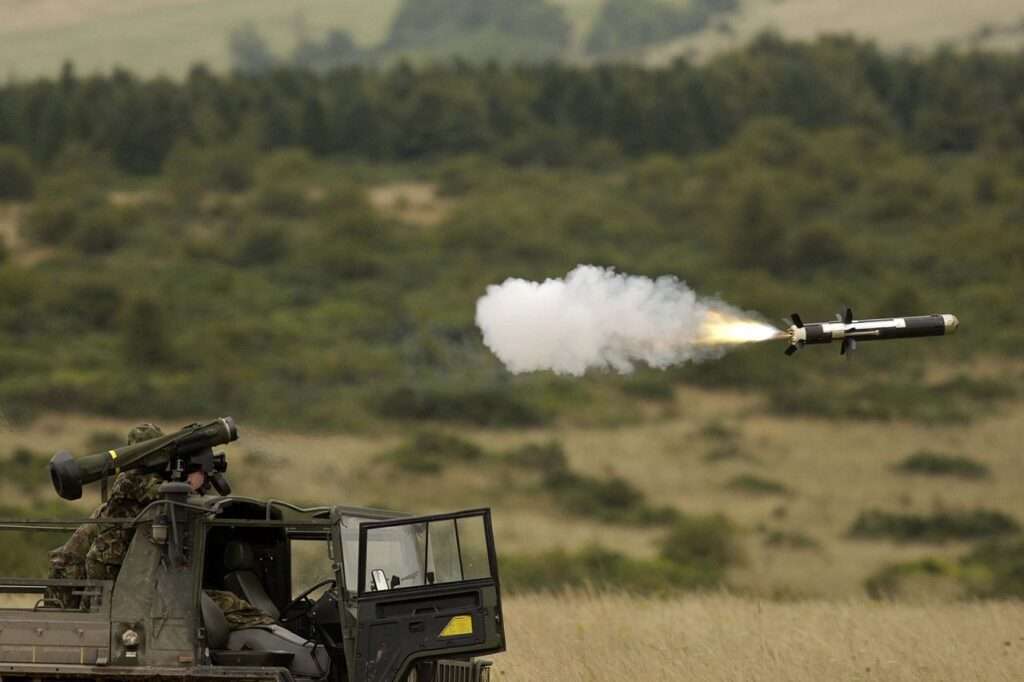
From here the missile holds its altitude and travels towards the target, continously tracking the target and making any necessary adjustments.
Finally, the missile enters its “terminal” phase, which sees the tracker select the best location to hit and the missile dive down onto the target.
In all likelihood the target will be destroyed. It has an extremely high accuracy, with a hit rate of over 90%. In fact, British trials with the weapon saw a 100% hit rate over 5 launches.
The Javelin was already well known in military circles, but it exploded into a household name at the beginning of the Russo-Ukrainian War in 2022. The Javelin was one of the few modern tank killing weapons that would reach Ukrainian troops in the opening stages of the Russian invasion.
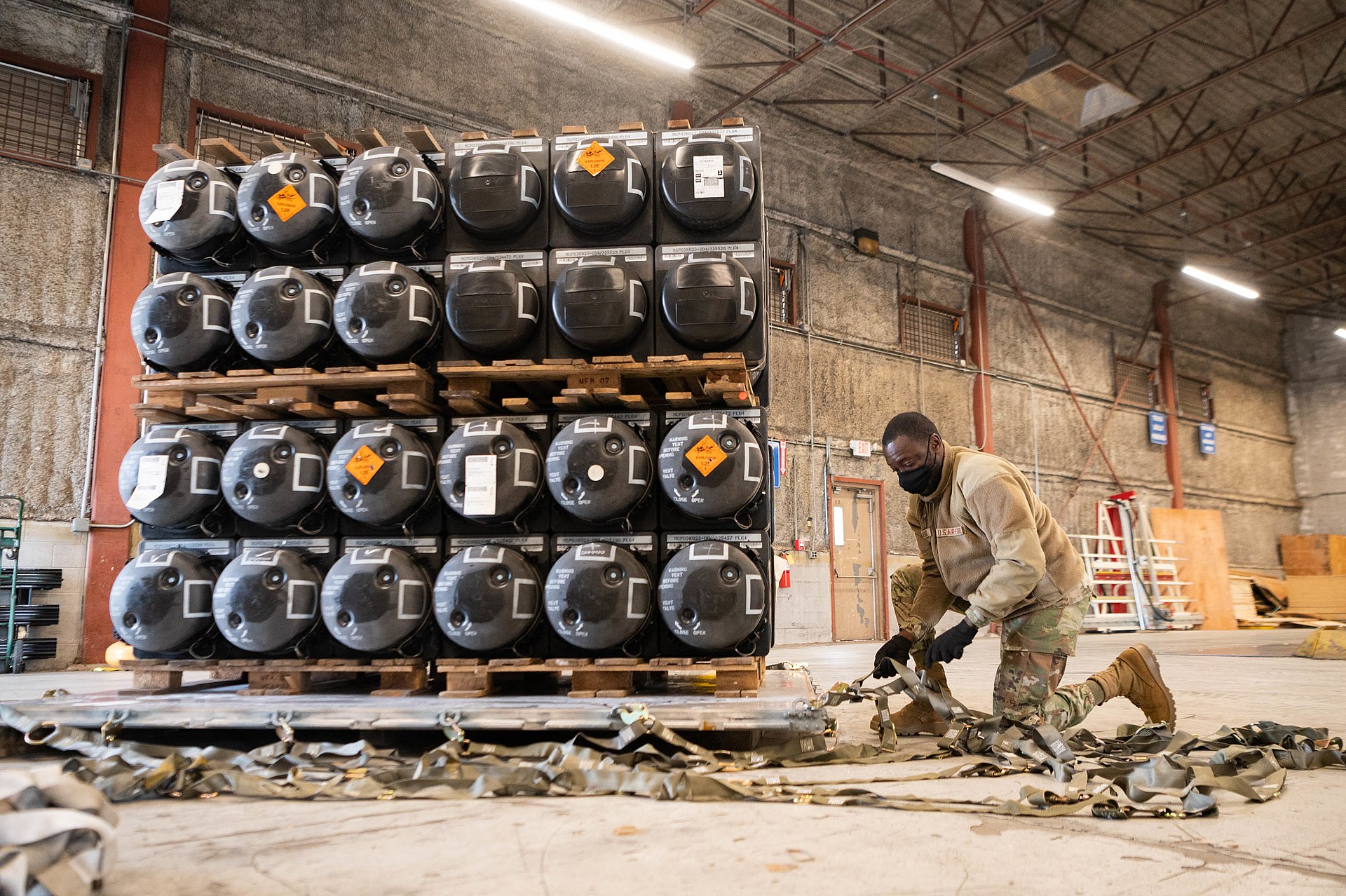
It soon proved devastating on the battlefield, knocking out massive amounts of Russian tanks. Russian tanks were soon seen modified with improvised slat armor over the roofs, nicknamed “cope cages”. These cages were intended to defend against the Javelin’s top attack but proved rather useless.
The Javelin is regarded as one of the primary reasons Ukraine was able to blunt the Russian invasion and prevent Kyiv from falling. Since then it has become a symbol of Ukrainian resistance, personified with the “Saint Javelin” character.
Read More Namer – The Most Heavily Armored IFV in the World
It will remain in the US’ inventory until 2050. It is doubtful that any land vehicle produced before then will be able to resist the Javelin without active protection systems.
